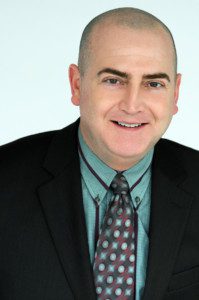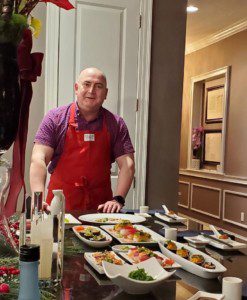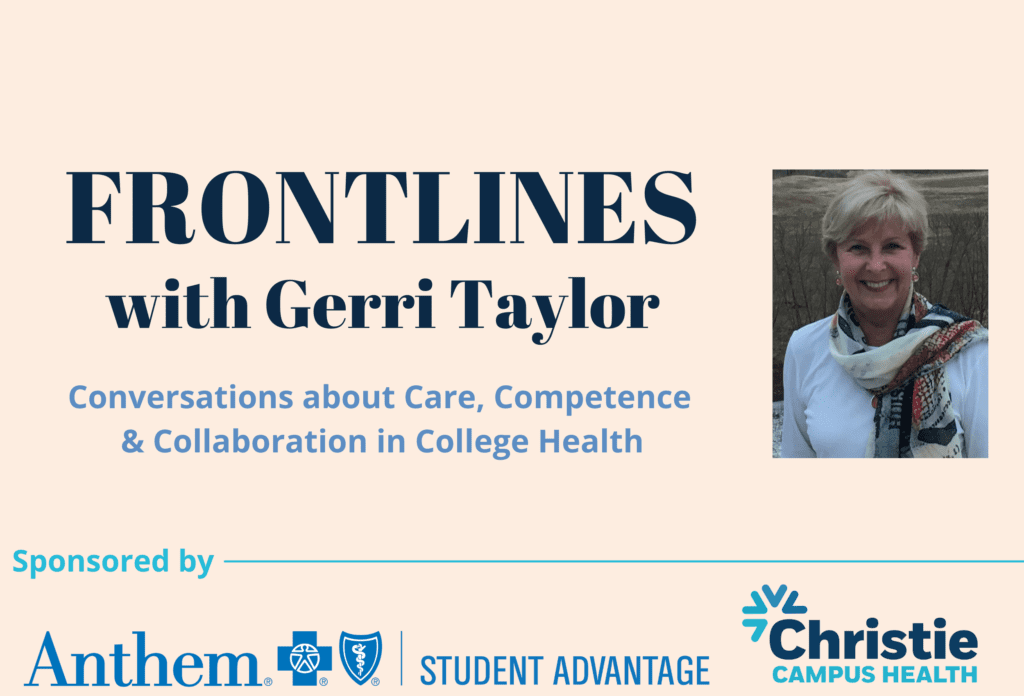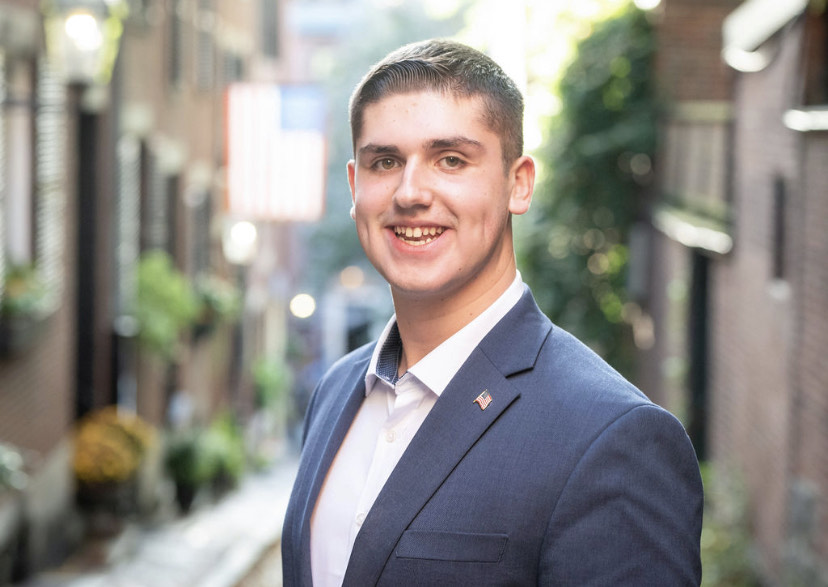Frontlines: Interview with James R. Jacobs, MD, PhD, Executive Director of Vaden Health Center; Associate Vice Provost for Student Affairs, Stanford University
If you are in the field of college health, you have likely heard of Dr. Jim Jacobs. The talented, easy-going physician from Stanford has been at the helm of numerous college health centers around the country, leaving a mark on each institution. In our interview, Dr. Jacobs speaks candidly about his own professional trajectory as well as the joys and challenges he continues to experience in the profession he loves. Here is an excerpt from our conversation.

James R. Jacobs, MD, PhD, Executive Director of Vaden Health Center; Associate Vice Provost for Student Affairs, Stanford University
Gerri Taylor: It is such a pleasure to speak with you as I have long admired your work and your leadership in college health. How did you come into the field? Can you tell us about your background?
Dr. Jacobs: I was born in Wyoming but growing up, we lived all over the country. My dad was a construction manager and so we’d move to one city and he’d build a bridge and then we moved to another city and he’d build a power plant, so we moved around a lot until junior high school. We were in the same (then) small town in Colorado for all of junior high and all of high school which I would claim is the most critical time to have that stability.
Gerri Taylor: How did you become interested in medicine?
Dr. Jacobs: My early inspiration for medicine likely came through my Aunt Pat who was an army nurse. I was indelibly influenced by her stories from work. I went through my teens wanting to be a physician and had the privilege to attend Johns Hopkins for college. I went in as a biophysics major, but, in my first year, I discovered engineering and stopped pursuing pre-med. As a junior, I was photocopying an article that I needed for a term paper and stumbled across a paper on computer-controlled drug delivery, which completely captured my imagination. I ended up doing a PhD in biomedical engineering at the University of Alabama at Birmingham, where the chairperson was the author of that article. My eventual research advisor accepted a job at Duke and ultimately invited me to do all my dissertation research there. When I finished the PhD, I joined the faculty at Duke, doing research in the Department of Anesthesiology and teaching in the Department of Biomedical Engineering.
Gerri Taylor: When did you transition into medicine?
Dr. Jacobs: I had fabulous colleagues and students at Duke, and we enjoyed many research successes. I eventually came to an exestential fork in the road, however, and had the privilege to attend medical school at Duke. Each of our clinical rotations included time in the Emergency Deparment, which I found most compelling. I ultimately did my residency training in Emergency Medicine and remain Board certified to this day. Unexpectedly, I find my training in emergency medicine and urgent care very applicable to much of what we see in college health.
Gerri Taylor: What inspired you to go into college health?
Dr. Jacobs: On the first day of the Introduction to Clinical Medicine rotation in medical school, I was assigned to a family physician who was doing student health that particular day, and the rest is history. Ironically, I never even knew that college health existed until that day. As a senior medical student, I was able to do a one-month elective with Dr. Bill Christmas, well known as one of the forefathers of college health, who ran student health at Duke. Opportunities in college health to teach and mentor were wholly compelling to me, but, of course, there is no clinical speciality in college health, so I moved forward with specializing in emergency medicine, hoping that there would eventually be an opportunity to be involved in college health.
“How do we get the right service to the right student at the right time? I think that a lot of us are doing better at that.”
As I began my practice of emergency medicine at a large hospital in Charlotte, I had the opportunity to do some part-time work as a staff physician and subsequently medical director in the student health center at the University of North Carolina in Charlotte. I later spent six years as director at Syracuse University and then at Ohio State. Later, I was recruited to the University of Southern California. I was there for two and a half years and then moved on to Stanford where I have been for the past six years.
Gerri Taylor: I wonder if your travel around the country as a child helped you adjust to all these moves?
Dr. Jacobs: I would absolutely say that is true. I think many folks are intimidated by the idea of having to uproot and move to a new city and situation. That has not been a problem for me.

Gerri Taylor: You have worked with some of the top leaders in college health: Bill Christmas, then other “giants” like Larry Neinstein at University of Southern California and John Dorman at Stanford. Now you are Stanford’s Associate Vice Provost of Health and Wellbeing and Executive Director of Student Health. How has that experience been?
Dr. Jacobs: I have learned so very much from those leaders and also from colleagues and peers across the country. This has led me to a role at Stanford that is seemingly perfect for me. I oversee eight departments, see patients almost every day, interact routinely with departments across the university, and even teach a freshman seminar at least once per year.
Gerri Taylor: How many staff do you have at Stanford?
Dr. Jacobs: We’ve got about 40 people each in Counseling and Psychological Services and in primary care. We have five people in a second mental health service called the confidential support team for students who have been affected by relationships in sexual violence. We have three people in a third mental health team that is for students on a gender spectrum and for those who are working through issues of coming out, or most specifically, transitioning. Our wellbeing department has about eight people where our health promotions professionals now are primarily life coaches. We also have about five people who do alcohol and other drug work. We have a new health and human performance team which teaches unit-bearing wellbeing and flourishing courses, all with the goal to help our students flourish. In total, there are approximately 120 professionals in our student health portfolio.
Gerri Taylor: In your view, what do you feel have been the biggest issues for college health centers in general as well as those COVID-related?
Dr. Jacobs: There are many challenges to consider. I think one of the thorniest is determining our scope of practice. We cannot be all things to all students, but who gets to decide? Tied to scope is budget and facilities. And a looming challenge that has become an urgent challenege is recruitment and retention of qualified professionals. The pandemic accelerated changes in models of care-delivery, for example telehealth, and changes in models of employee engagement, for example expectation for hybrid work schedules, to which college health will have to adapt rapidly. College health has prided itself in being high-touch, going above and beyond to assist our student clients and patients; our understanding of this will have to evolve in settings where some or much of our staff will be off-site, even after the pandemic.
Gerri Taylor: That’s a lot. Add COVID to this and all the additional responsibilities and not being able to be all things to all people. How do you manage that?
Dr. Jacobs: Good questions, Gerri, and I will reply with an example. Three of us – one of our counseling center psychologists, the director of our wellbeing department, who also happens to be a psychologist, and I –did a presentation to the academic department chairs last week. One of the topics that came up during Q&A was the inability of anybody to say no to anybody. And whether that’s real or perceived, it’s an issue. The example given by the faculty member was a student “demanding” that a grade be changed from an A- to an A. How do they say no in a way that diffuses the tension but also supports the student?
Applying this to college health, consider a clinician who is only a year or so out of training who is seeing a student-patient who listed ankle sprain as the visit reason. Once the student gets into the exam room, the student reports that she also needs a refill on birth control, was told by family to get her thyroid checked, has had chronic diarrhea, AND has the ankle pain. The clinician only has 20 minutes. Possibly the clinician becomes completely overwhelmed because they don’t have the experience to be able to prioritize and have the student pick one or two of those today and triage the others for another time. This can be distressing for the clinician, who fears “getting in trouble” or for disappointing the student. We must teach and cultivate ways to say no that are sophisticated and supportive, as a survival technique. One of the roles for those of us in leadership positions is to empower our staff to do the right thing, to know what we consider the right things to be, and to earn enough gravitas with senior administrators that our approach is rarely questions.
Also, many college health centers can justify needing more clinical staff, but they also need more space and more non-clinical staff, such as medical assistants and care managers and insurance cordinators. Health centers are grateful to administrators for giving them professionals, but they need paraprofessionals too. How do we get that right understanding for decision-makers who believe you can say no once you have maxed out on visits, except when you’ve got a kid on the other end of the phone who is having trouble breathing and doesn’t have the right insurance to be able to go to the urgent care down the street? What are you going to do? These are not necessarily new problems. COVID has exacerbated them.
Gerri Taylor: I happen to think the health area and counseling has been hit much harder than any other departments on campus, but how do you make the case for more resources?
Dr. Jacobs: I think it’s relationship-based. And as an example, at the presentation that we gave last week to the department chairs, the provost was there for the entire 90 minutes, and she heard both what we had to say and what the department chairs had to say. Now that doesn’t mean she can fix it immediately, but I think the relationships have to be strong enough that I can go to my boss and say we’re at a crisis point here. What do we want our student health center to be? How do we make sure that our student health services are seen as part of the fabric of the university, part of the mission? We’re never going to have the same stature as an academic department, because clearly parents don’t send their kids to our institutions to have access to our student health clinics, but I want a student to look back and say, “Wow, I was better able to get through my degree for having had access to these health, counseling and wellness services.”
Gerri Taylor: Psychiatrists and mental health services are in greater demand now. What do you see as the biggest issues that have come out of COVID – what are your thoughts? I have heard you are an “out-of-the-box” thinker.
Dr. Jacobs: I don’t know if I have “out-of-the-box” solutions or they just come from necessity. I end up being in a position to talk about mental health partially because I’m an executive director, and there are multiple mental health and wellbeing units that report to me. I also have a faculty appointment in the Department of Psychiatry and Behavioral Sciences, which raises the expectations.
One of my concerns came about around the time of the shootings at Virginia Tech. Some of the investigation that came out of that led to people saying anything that feels odd needs to go to CAPs. And I think that we went too far in that direction.
It’s okay to be weird. It’s okay to be sad. It’s okay to not fit into the middle section of the bell curve. Instead of mapping everything onto the need for a clinical resource, can we help to right-size the resources so that people get what they need when they need it? That’s part of what led to our coaching program. We’re also doing a lot more outreach to staff and faculty about how to work with distressed students. Sometimes, all the student needs is a shoulder to cry on and then they’re over it and they’re on with their life. But if you immediately start that process of getting them into a clinical appointment, it’s not clear that that’s a win for anybody.
It’s more, how do we get the right service to the right student at the right time? I think that a lot of us in college health are doing better at that, but then that’s also coupled with the explosive need. There’s only so much give in the system. Add the COVID-related loneliness issues and I’ll call it deferred maintenance, as I’m seeing this both on the mental health side and on the physical health side. Then you add the racialized trauma that so many of our students have experienced, the realities of our international students, of being in a vulnerable situation to start with, and not being able to either go home or come back, as well as the issues of degree progress for all of our students. That doesn’t feel like a good equation.
One of my concerns when we spoke to the department chairs last week was the need for a public health or community approach to mental health. I had this revelation in the 48 hours prior to the presentation. Everyone in that room understands the public health approach we’ve taken to COVID. There are preventive methods that we can take, whether it’s masks or vaccines. I was able to conceptualize all of these parallels to mental health and wellbeing on campus. Some people seem very vulnerable and never have a problem with COVID, that’s true of mental health and wellbeing. Our preference on the mental health side is prevention. I found it really helpful to compare the two. It truly takes a village with health, counseling, wellness, academics and all the departments on campus. We would much rather prevent than treat and will do anything that we can do to partner with others to prevent issues.
Gerri Taylor: What do you do to take care of yourself during all of this? You have a lot on your plate there at Stanford.
Dr. Jacobs: I love my work. I thrive getting to do a little bit of a lot of things. And I get to tickle my brain in all the ways that it needs to be tickled. And so that can be patient care, that can be budget and finance, that can be signing off on a human resources decision, teaching, or just walking across campus for a meeting.
Gerri Taylor: But what do you do outside of that to get away from it?
Dr. Jacobs: I am increasingly identifying as a foodie, of sorts. I do like high-end food, and I am increasingly trying to learn to cook myself, but I am equally happy at a pub sitting in front of a plate of nachos, with lots of jalapenos of course. And if there’s live music, all the better. Here, we’re warm enough to eat outside, essentially 12 months out of the year, especially if there’s a heat lamp out on the patio. It’s a true luxury living here.
Gerri Taylor: Finally, I heard that you did some work for Homeland Security? Do you have a few minutes to tell me a little bit about that?
Dr. Jacobs: Sure. It was 2006 or 2007. I got a phone call and the person on the other end of the line said, “Hello, Jimmy.” In my entire life, there’s only been three people who have actually called me Jimmy – my maternal grandmother, my second grade teacher, and my Emergency Medicine Residency Director. This was my Emergency Medicine Residency Director. With almost no introduction, he said, “Jeff and I want you up here in Washington as soon as you can get here.”
Jeff Runge had been one of my attending physicians when I was an emergency medicine resident and was now the Assistant Secretary for Health Affairs for the Department of Homeland Security. My Residency Director was working for him in Washington and the two of them invited me to join the team. I was at Syracuse University at the time. DHS found a program through Oak Ridge National Laboratories where I was actually able to be a federal employee 50% of the time for a year as a visiting scholar. So, I flew back and forth almost every week between Washington and Syracuse, and it was a life-changing experience for me. Everyone I worked with was remarkably talented and dedicated. Most of my involvement was related to bio surveillance.
Gerri Taylor: That had to have helped you with responding to COVID.
Dr. Jacobs: Yes, this was back when H5N1 was still a huge concern. Literally, if two or three birds were found dead on the roof of a building somewhere in the United States it would ping in Washington. I had a fabulous experience and learned lots, much of which has indeed been helpful during COVID. After the DHS experience, I had an opportunity to teach in a program in Ohio for future intelligence analyists. My section started as bioterrorism but over the years ended up also including chemical, nuclear and radiological threats. Even after I transitioned to California, I would go back to Ohio two or three times a year to teach the course. Unfortunately, this analyist bootcamp program was a casualty of COVID. But, stemming from my DHS-inspired interests, I have been teaching an undergraduate course on secrecy at Stanford for the past four years. We discuss personal and professional secrecy, and the students seem to get a lot out of it. I do slip in a bit of biosurveillance into the course, where I can.
Gerri Taylor: It has been fascinating to hear how your different work trajectories have tickled your brain in different ways. Your wisdom, experiences, and thoughtful analysis have been an incredible asset to all of us on the ACHA COVID-19 Task Force and I have been so fortunate to be able to work so closely with you. Thank you so much for spending this time with me.




